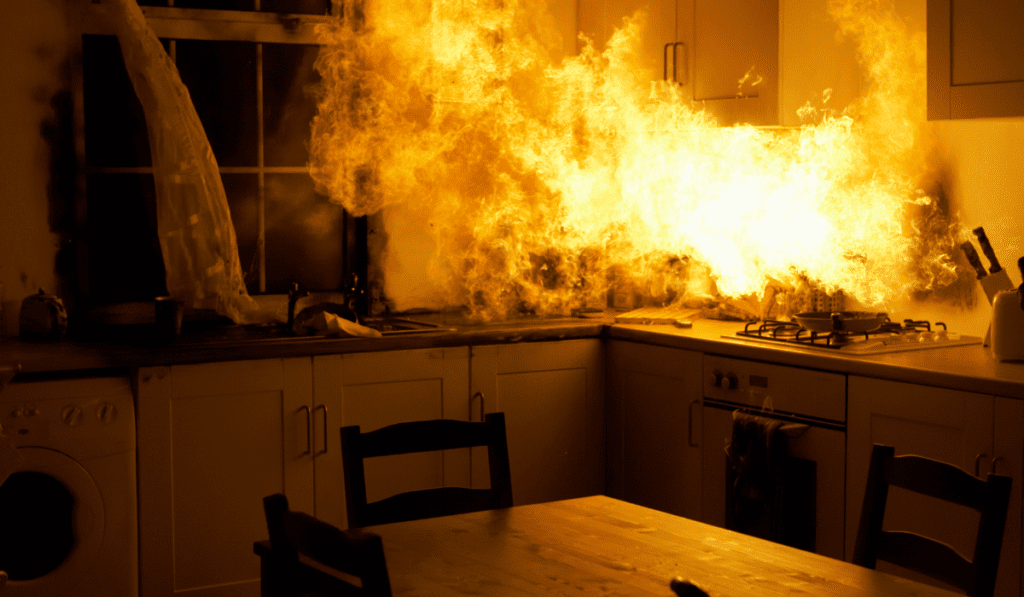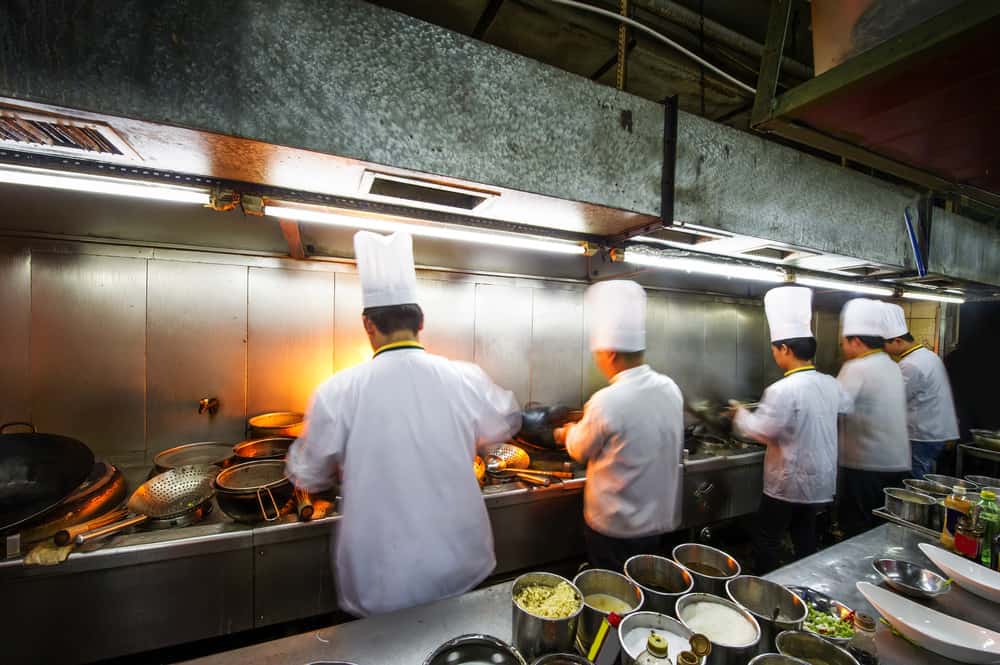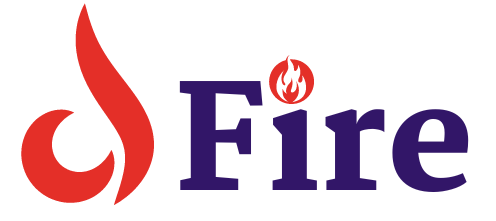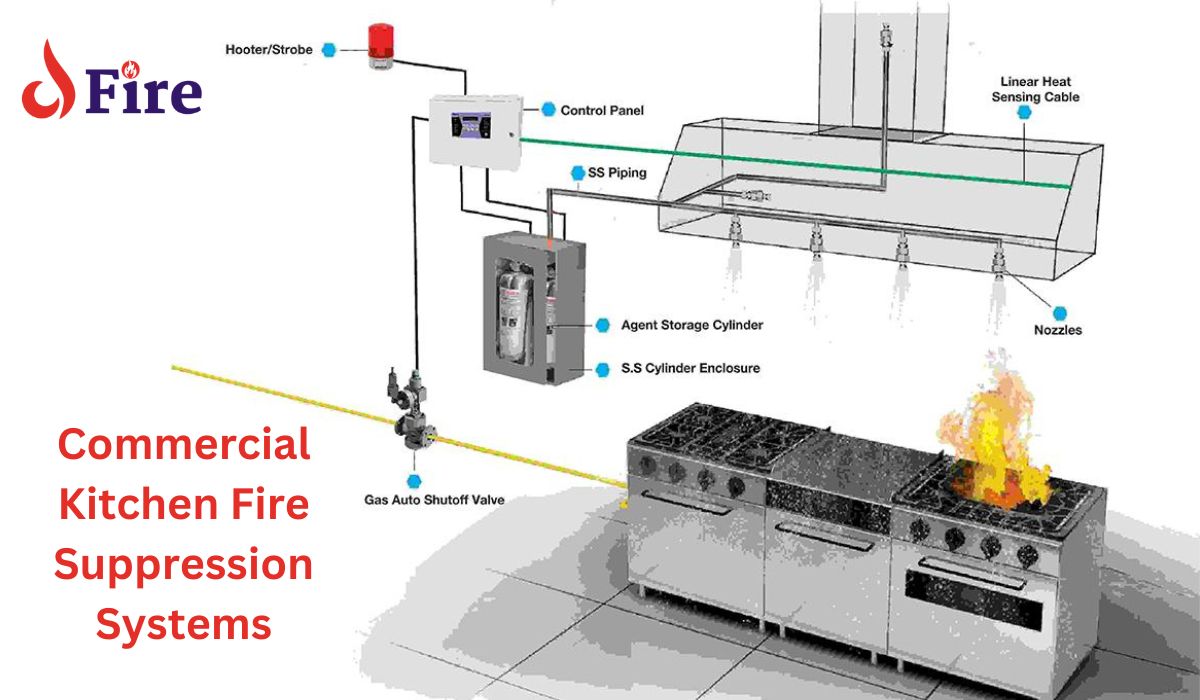A commercial kitchen fire suppression system is an essential safety feature designed to extinguish kitchen fires swiftly. These systems detect and douse fires, typically using chemicals, to prevent the spread and minimize damage.
Ensuring the safety of a commercial kitchen requires a robust fire suppression system tailored to handle the high-heat and potentially flammable conditions found in these environments. Comprising detection devices, fire extinguishing agents, and a means of activation, these systems play a critical role in protecting both life and property.
Restaurants, hotels, and catering facilities rely on them to meet strict fire safety regulations. A well-maintained fire suppression system not only safeguards against devastating fires but also provides peace of mind for business owners and employees. Regular inspections and maintenance are crucial for keeping the system in optimal working condition, ready to act in the event of a fire.
Introduction To Commercial Kitchen Fire Suppression
Imagine a bustling kitchen. Chefs sauté, fry, and flambé. Then, a fire starts. Quick action is vital. Commercial kitchen fire suppression systems are heroes here. They detect and smother flames fast, protecting lives and property. This section explores these vital systems in any eatery’s defense against fire.
Rising Importance Of Fire Safety In Eateries
Eating out is a treat for families and friends alike. But behind the scenes, fire risks lurk. Grease, high temperatures, and open flames can create danger. That’s why fire safety is more important than ever. Eateries must aim to prevent disasters. It’s not just a recommendation; it’s a serious responsibility.
- Protects customers and staff
- Minimizes damage to equipment
- Ensures business continuity
Scope Of The Ultimate Safety Guide
This guide will uncover the layers of kitchen fire suppression. It’s an all-you-need-to-know tour on safety systems. You’ll learn about detection, mechanisms, and response. This is your blueprint to confidently manage your kitchen’s fire risks.
- Detection: How systems sense fire
- Mechanisms: Tools that stop flames
- Response: Actions after suppression
Identifying Risks In Commercial Kitchens

Commercial kitchens are bustling hotspots teeming with culinary activity.
Recognizing fire risks in these environments is critical for safety and smooth operations. Unseen dangers lurk amid the clatter of pots and pans.
This knowledge helps prevent hazardous situations that could lead to devastating fire outbreaks.
Let’s delve into the specific risks, pinpointing causes and critical areas that require vigilant fire safety measures.
Common Causes Of Kitchen Fires
Kitchen fires ignite for various reasons, making awareness and prevention strategies essential. Among these causes, there are a few notorious culprits.
- Overheated cooking oils: They can instantly burst into flames.
- Unattended stoves: A moment’s distraction can lead to disaster.
- Electrical faults: Faulty appliances or wiring trigger fires unexpectedly.
- Flammable objects: Towels or packaging materials catch fire easily.
- Blocked ventilation: Excessive grease buildup turns vents into fire hazards.
Areas Prone To Fire Outbreaks
Certain areas in a kitchen pose greater fire risks than others. Below are the hotspots for vigilance.
| Area | Risk Level | Preventive Action |
|---|---|---|
| Stove/Oven Area | High | Regular monitoring and maintenance |
| Deep Fryers | High | Install automated suppression systems |
| Grill Area | Medium | Clean grills after each use |
| Electrical Panels | Medium | Schedule regular inspections |
| Storage Rooms | Low | Keep flammables separate and labeled |
Types Of Fire Suppression Systems
Commercial kitchens are buzzing hives of activity. Safety within these kitchens is paramount, particularly when it comes to fire. The right fire suppression system is crucial for any establishment to ensure the safety of staff and patrons. Explore the different types designed to tackle flames effectively.
Chemical Suppression Solutions
Chemical agents are widely used in modern fire suppression. These systems often deploy a wet chemical compound that extinguishes flames by creating a barrier between the fire and the source of fuel, cutting off the oxygen and suppressing the fire’s ability to spread.
- Uses potassium salts – effective on grease fires.
- Automated or manual activation options.
- Non-toxic – safe for kitchens.
Water-based Alternatives
Water mist systems offer a unique fire suppression solution. Unlike traditional sprinklers, these systems release a fine mist to cool the area and reduce the oxygen levels.
| Type | How It Works | Best For |
|---|---|---|
| Low-pressure | Water is released in a fine mist. | Sensitive equipment. |
| High-pressure | Mist is released at higher velocities. | Larger commercial kitchens. |
Water-based systems are ideal for environments where chemicals could cause damage, as they leave behind no chemical residue and are effective in quickly controlling and extinguishing fires.
Components Of A Fire Suppression System
When we talk about keeping commercial kitchens safe, fire suppression systems are crucial. They are like silent guardians, ready to spring into action at the first sign of flames. Understanding the components of a fire suppression system helps ensure your kitchen is prepared to handle a fire emergency.
Fire Extinguishing Agents
Kitchens need fast-acting fire suppression. The agents do this job. They move quick to put out fires. Here are what they use:
- Wet Chemicals: They cool and smother the flames.
- Dry Chemicals: They stop chemical reactions in fires.
- Carbon Dioxide: It takes away the oxygen to put out fires.
Delivery Mechanisms
Here’s how:
- Sprinkler Heads open when they get hot.
- Pipes carry agents from tanks to fires.
- Nozzles spread agents over fires.
Alarm And Detection Units
Listen up: Alarms and detectors find fires. They then tell the system to work. This table shows their types:
| Type | How It Works |
|---|---|
| Thermal Detectors | They react to heat. |
| Smoke Detectors | They see smoke and set off an alarm. |
| Manual Pull Stations | People use these when they see a fire. |
Each of these components play a key role. Together, they keep kitchens safe from fires.
System Installation Process
Protecting your commercial kitchen from fire dangers starts with a robust Fire Suppression System. The System Installation Process is precise. It requires a customized approach. Experts ensure it meets all safety compliance standards. Now, let’s look at the right installation steps to keep your kitchen safe and code-compliant.
Designing A Custom Fire Suppression Layout
Every kitchen has unique needs. Therefore, a tailored layout is vital. Design involves several steps:
- Identify risk areas
- Select appropriate suppression agents
- Determine system components
The goal is a design that covers all fire risks. It must align with the kitchen layout. Professionals use detailed blueprints. These serve as guides during installation.
Professional Installation And Compliance
Installation is a job for licensed technicians. They follow strict protocols. This ensures safety and efficiency. Key steps include:
- Mounting nozzles above risk zones
- Connecting gas valves and sensors
- Installing control panels
Every system must meet local fire codes. After installation, technicians conduct tests. They check for flaws and performance. Only after a thorough inspection, they certify the system as compliant.
| Item | Status |
|---|---|
| Nozzle Placement | Verified |
| Electrical Connections | Secured |
| System Testing | Completed |
| Final Inspection | Passed |
To conclude, the right design and expert installation are non-negotiable. They ensure your commercial kitchen is ready to face any fire emergency. Trust only professional installers with this critical task. Your safety is their priority.

Credit: allegiantfire.net
Operation And Activation Protocols
Operation and Activation Protocols are critical for the efficiency of Commercial Kitchen Fire Suppression Systems. These systems protect kitchens from fires by extinguishing them before they grow. Knowing how they work can ensure safety and compliance with fire safety regulations. This section explains the differences between manual and automatic operation, and details how the system activates.
Manual Versus Automatic Operation
Commercial kitchens choose between two types of operations: manual and automatic. Each type functions differently during a fire.
- Manual Operation: Requires a person to activate the system. A pull station is often used for this.
- Automatic Operation: Sensor-based and activates without human interaction. It detects heat and flames automatically.
Both options can work together for extra safety. Kitchens must have easy access to manual controls.
Understanding Activation Triggers
Activation triggers signal the system to start. Knowing them helps maintain a safe kitchen environment. Here’s how they work:
| Trigger Type | Description |
|---|---|
| Heat Sensors | Detect high temperatures, typical of fires, and activate the system. |
| Smoke Detectors | Sense smoke from burning food or grease and trigger the suppression. |
| Flame Detectors | Pick up on the specific light frequencies from flames, prompting action. |
| Manual Stations | Allow for human-activated fire suppression by pulling a handle. |
Restaurants should test and inspect these systems regularly. Sensors must be clean and free of blockage.
Regular Maintenance And Inspection
Maintaining a commercial kitchen involves routine fire suppression system check-ups. To prevent fires, systems need regular inspections. These systems protect equipment and lives in commercial kitchens. They stop fires from spreading and reduce damage.
Scheduling Routine Check-ups
Ensuring your kitchen is safe involves scheduled maintenance. It’s critical to plan these check-ups annually. Some areas may have strict codes that require more frequent check-ups. Check local laws to stay compliant. Always work with certified professionals. They understand the intricate components of your suppression system.
Maintenance Procedures To Ensure Efficiency
Effective suppression system maintenance means performing specific procedures. These steps guarantee the system’s efficiency when needed.
- Examine nozzles and hoses – Ensure they are clear and undamaged.
- Check pressure gauges – Confirm they show the correct pressures.
- Look at the chemical agent – Make sure there is enough and it is not expired.
- Test the system’s activation – Activation must be quick and effective.
Log all inspections in detail. Replace parts that show wear and tear. Test alarms and electrical components too. Following these steps can save lives and property.
Remember, upkeep is not just a practice; it’s a safeguard for your business’s future.
Training Staff For Emergencies
Ensuring that your kitchen staff are well-prepared for potential fires is crucial. Regular training leads to efficient and calm reactions during actual emergencies. Let’s discuss how to effectively equip your staff with the necessary skills and knowledge.
Conducting Fire Safety Drills
Fire safety drills are essential for a safe work environment. Drills should occur frequently so that responses become second nature. Here is how to implement these drills:
- Communicate: Announce drills in advance so staff can prepare.
- Schedule: Hold drills during different shifts for full coverage.
- Simulate Real Scenarios: Base your drills on possible fire situations.
- Review: After every drill, gather your team to discuss improvement areas.
- Track Performance: Note the response times and assess any hesitations.
Educating Employees On Suppression System Use
Training employees on the proper use of fire suppression systems is crucial. They must understand how these systems work and when to use them. Below are steps to ensure proper use of the systems:
- Identify: Show the location and components of the suppression system.
- Demonstrate: Perform a hands-on demonstration of the system’s use.
- Manuals: Provide manuals and guidebooks for extra information.
- Emergency Contacts: Display contact information for immediate response.
- Regular Updates: Keep your team informed about any system updates.
Upgrading And Modernizing Systems
Every year, commercial kitchens evolve. Safety measures need to keep pace. Staying ahead means upgrading and modernizing fire suppression systems. It’s a mix of timing and technology.
When To Upgrade Your Fire Suppression System
Commercial kitchens must respond swiftly to safety risks. Regular checks help. Know the signs that point to needed upgrades:
- System age: Is it older than a decade?
- Changes in layout: Have you remodeled or changed kitchen equipment?
- Regulations: Are you meeting current fire codes?
- Functionality: Does the system perform without hiccups?
- Incident history: Have there been recent fires or near misses?
Latest Technologies In Fire Safety
Better technology saves lives. It also saves money in damage costs. Keeping updated with advancements is critical. The latest include:
| Technology | Benefit |
|---|---|
| Automation | Quick response without human intervention |
| Overlapping Agents | Protects all areas, even hard-to-reach places |
| 3D Nozzles | Delivers extinguishing agents in three dimensions |
| Smart Alarms | Connects to mobile devices for instant alerts |
| IOT Integration | Allows for real-time monitoring and data analysis |
Legal Requirements And Certifications
Understanding the legal requirements and certifications for Commercial Kitchen Fire Suppression Systems keeps your business safe. These laws protect staff and customers. Make sure your system meets the standards.
Navigating Fire Codes And Regulations
Fire codes vary by location. Your commercial kitchen must comply with national and local laws. Examples include the NFPA 96 and local building codes.
- National Fire Protection Association (NFPA) 96: Guidelines for ventilation and fire protection in cooking operations.
- International Building Code (IBC): Requirements for building safety including fire suppression systems.
- Local Fire Codes: May have additional rules for kitchen safety.
Certification Process For Compliance
The certification process ensures your fire suppression system is reliable. Here’s how to get compliant:
- Fire Suppression System Inspection: A certified technician inspects your system.
- Official Documentation: Verification that your system meets current fire codes.
- Regular Maintenance: Follow a maintenance schedule to stay compliant.
| Step | Action | Outcome |
|---|---|---|
| 1 | Inspection by certified technician | Assessment of system’s condition |
| 2 | Gather necessary documentation | Proof of compliance |
| 3 | Regular system maintenance | Ongoing compliance |
Certification is an ongoing process. Maintain records of inspections and services. Stay proactive to keep your kitchen safe and legal.
Choosing The Right Fire Suppression System
A commercial kitchen’s safety hinges on the proper fire suppression system.
Kitchens face unique fire risks.
This decision impacts safety, compliance, and operations.
Explore key elements to make the right choice.
Factors To Consider
Identifying the correct system requires careful thought.
Here’s what to weigh in.
- Type of cooking – Different kitchens need different systems.
- Size and layout – The system must cover all risk areas.
- Regulations – Local codes affect system choice.
- Budget – Consider both installation and maintenance costs.
Evaluating System Performance And Reliability
A system’s track record matters.
Look for UL-listed models with positive reviews.
| Feature | Benefit |
|---|---|
| Quick Response | Minimize damage |
| Easy Maintenance | Ensure longevity |
| Automatic Activation | Protect when unattended |
| Manual Override | Control unexpected situations |
Case Studies: Effective Fire Suppression In Action
Effective fire suppression systems in commercial kitchens are life-saving. They kick into action during emergencies. Let’s dive into real scenarios where they’ve made a difference. We’ll also learn from past events to improve fire safety. Here are some eye-opening case studies.
Real-life Scenarios Of Suppression Success
A bustling steakhouse faced disaster when a fryer caught fire. Thankfully, its fire suppression system activated immediately. It doused the flames before spreading. The restaurant resumed service quickly. Staff and customers remained safe.
Another instance saw a pizza oven in a popular pizzeria go ablaze. The suppression system responded in seconds. This fast action kept the fire small and manageable. Damage was minimal, and business disruption was reduced drastically.
What do these scenarios teach us? Quick and efficient fire suppression saves lives and businesses. It turns what could be a catastrophe into a manageable incident.
Learning From Past Fire Incidents
| Incident | Lesson Learned | Outcome |
|---|---|---|
| Grill flare-up in a diner | Regular maintenance ensures system readiness | Fire suppressed with no injuries |
| Electrical fire in a food court | Varied fire risks need versatile systems | Multi-class fire extinguished swiftly |
| Oil fire in a fast-food joint | Quick response is crucial for oil fires | System activated, kitchen saved |
Each incident above highlights the importance of preparedness. Regular checks and knowledge of the system can prevent major fires. Staff training is also crucial.
- Implement regular system checks
- Train staff on emergency protocols
- Adapt systems for different fire types
Concluding Thoughts On Kitchen Fire Safety
Ensuring the safety of a commercial kitchen goes beyond compliance with regulations—it’s a responsibility. But how do we encapsulate the wealth of information shared about kitchen fire suppression systems into actionable insights? Let’s reflect on what we’ve learned to help maintain a secure environment for everyone in the kitchen.
Summarizing Key Takeaways
A commercial kitchen fire suppression system is vital for the safety of staff and patrons alike. Let’s review the main points:
- Regular maintenance is non-negotiable: Systems must be inspected and serviced consistently.
- Proper installation is crucial: It ensures the system works when needed most.
- Training is essential: Every kitchen staff member must know how to operate the system.
- Quality can’t be compromised: Invest in high-quality systems for reliability and longevity.
Fostering A Culture Of Safety
A safety-first mindset within the kitchen crew is imperative. Cultivating this culture includes:
- Continuous education: Keep the team informed about fire safety practices and updates.
- Drills and practice: Conduct regular fire response exercises to reinforce protocols.
- Open communication: Encourage questions and discussions about fire safety concerns.
- Promoting responsibility: Assign specific fire safety roles to team members.
Implementing these strategies not only enhances safety but also boosts the team’s confidence in managing fire-related incidents. Trust in a well-prepared team and a fully functional fire suppression system sets the foundation for a serene commercial kitchen environment.

Credit: blog.qrfs.com
Frequently Asked Questions On Commercial Kitchen Fire Suppression System
What Triggers Commercial Kitchen Fire Systems?
Commercial kitchen fire suppression systems are typically activated by high heat or direct flames, ensuring rapid response during a fire.
Are Kitchen Fire Suppression Systems Mandatory?
Yes, fire suppression systems are often required by law for commercial kitchens to enhance safety and minimize fire risks.
How Often Should Fire Systems Be Inspected?
Fire suppression systems in commercial kitchens should be inspected semi-annually to ensure they’re functioning properly and comply with safety regulations.
Can Fire Suppression Systems Be Retrofitted?
Many commercial kitchens can retrofit fire suppression systems to upgrade their existing fire safety measures and comply with current standards.
What Is The Cost Of A Kitchen Fire System?
The cost of a commercial kitchen fire suppression system varies based on kitchen size, complexity, and specific system features.
What Maintenance Do Fire Systems Need?
Regular maintenance for kitchen fire suppression systems includes inspections, testing, and replacing expended components to ensure optimal functionality.
Conclusion
Safety in a commercial kitchen is non-negotiable. Fire suppression systems are essential to this effort. Choosing the right one protects your enterprise and staff. Regular maintenance ensures long-term reliability. Investing in a robust fire suppression solution secures peace of mind and upholds industry standards, safeguarding your culinary space against unforeseen dangers.

I’m Abdus Sobur, a highly skilled and professional Fire Safety Officer with a passion for safeguarding lives and property. Over the course of my career, I’ve conducted numerous successful fire safety audits, earning a reputation for excellence in ensuring public safety.
In addition to my role as a Fire Safety Officer, I’m also dedicated to raising awareness about the importance of fire safety. Through my blog, I share insights into the functions of different fire safety equipment, aiming to empower individuals with the knowledge they need to protect themselves and their communities.
I’m driven by a deep commitment to promoting fire safety awareness and preventing fire-related incidents.

